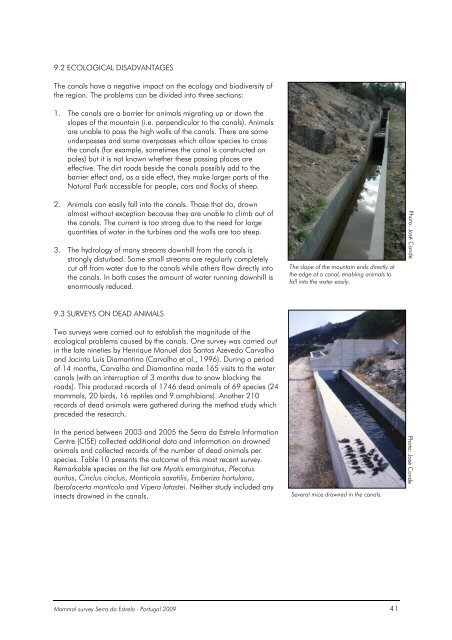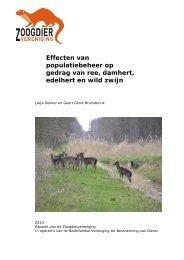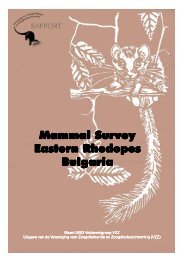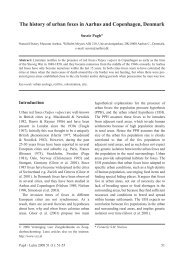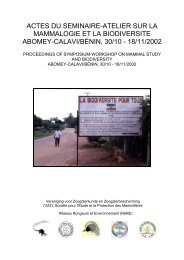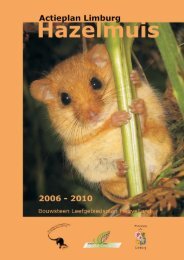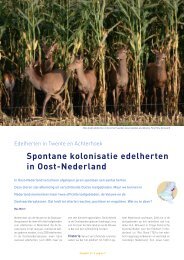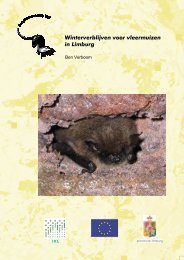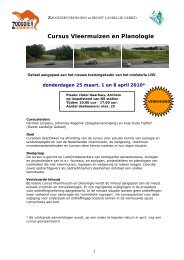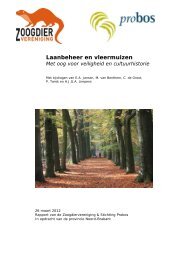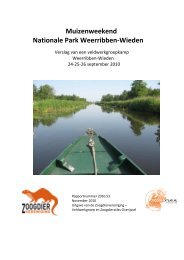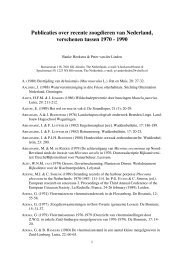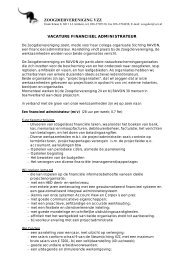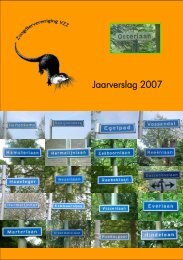mammal survey serra da estrela portugal - De Zoogdiervereniging
mammal survey serra da estrela portugal - De Zoogdiervereniging
mammal survey serra da estrela portugal - De Zoogdiervereniging
Create successful ePaper yourself
Turn your PDF publications into a flip-book with our unique Google optimized e-Paper software.
9.2 ECOLOGICAL DISADVANTAGESThe canals have a negative impact on the ecology and biodiversity ofthe region. The problems can be divided into three sections:1. The canals are a barrier for animals migrating up or down theslopes of the mountain (i.e. perpendicular to the canals). Animalsare unable to pass the high walls of the canals. There are someunderpasses and some overpasses which allow species to crossthe canals (for example, sometimes the canal is constructed onpoles) but it is not known whether these passing places areeffective. The dirt roads beside the canals possibly add to thebarrier effect and, as a side effect, they make larger parts of theNatural Park accessible for people, cars and flocks of sheep.2. Animals can easily fall into the canals. Those that do, drownalmost without exception because they are unable to climb out ofthe canals. The current is too strong due to the need for largequantities of water in the turbines and the walls are too steep.3. The hydrology of many streams downhill from the canals isstrongly disturbed. Some small streams are regularly completelycut off from water due to the canals while others flow directly intothe canals. In both cases the amount of water running downhill isenormously reduced.The slope of the mountain ends directly atthe edge of a canal, enabling animals tofall into the water easily.Photo: José Conde9.3 SURVEYS ON DEAD ANIMALSTwo <strong>survey</strong>s were carried out to establish the magnitude of theecological problems caused by the canals. One <strong>survey</strong> was carried outin the late nineties by Henrique Manuel dos Santos Azevedo Carvalhoand Jacinto Luís Diamantino (Carvalho et al., 1996). During a periodof 14 months, Carvalho and Diamantino made 165 visits to the watercanals (with an interruption of 3 months due to snow blocking theroads). This produced records of 1746 dead animals of 69 species (24<strong>mammal</strong>s, 20 birds, 16 reptiles and 9 amphibians). Another 210records of dead animals were gathered during the method study whichpreceded the research.In the period between 2003 and 2005 the Serra <strong>da</strong> Estrela InformationCentre (CISE) collected additional <strong>da</strong>ta and information on drowne<strong>da</strong>nimals and collected records of the number of dead animals perspecies. Table 10 presents the outcome of this most recent <strong>survey</strong>.Remarkable species on the list are Myotis emarginatus, Plecotusauritus, Cinclus cinclus, Monticola saxatilis, Emberiza hortulana,Iberolacerta monticola and Vipera latastei. Neither study included anyinsects drowned in the canals.Several mice drowned in the canals.Photo: José CondeMammal <strong>survey</strong> Serra <strong>da</strong> Estrela - Portugal 2009 41


